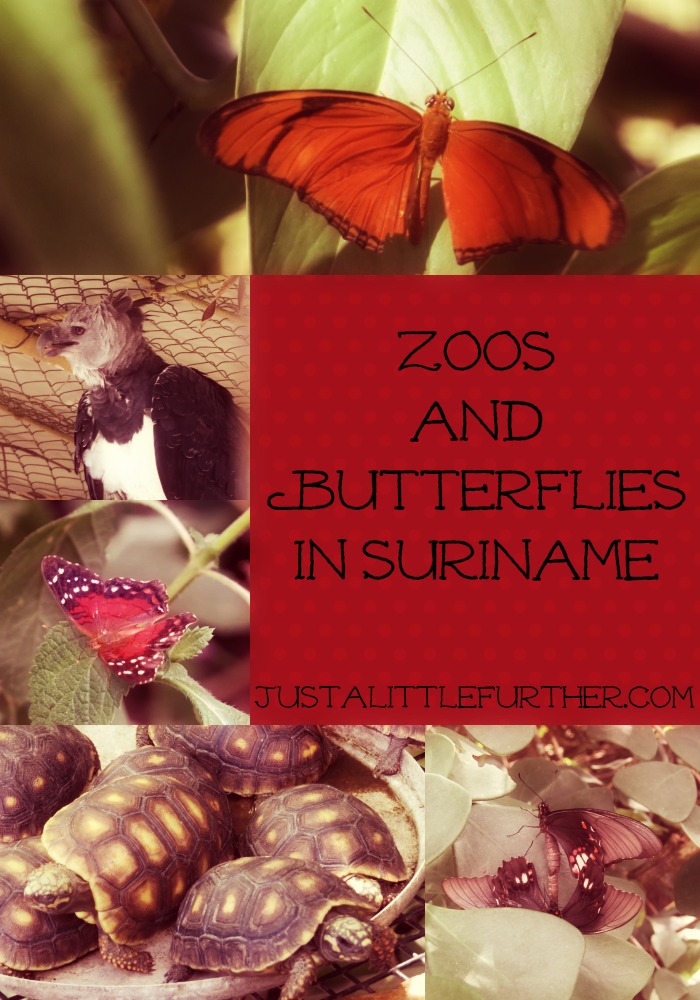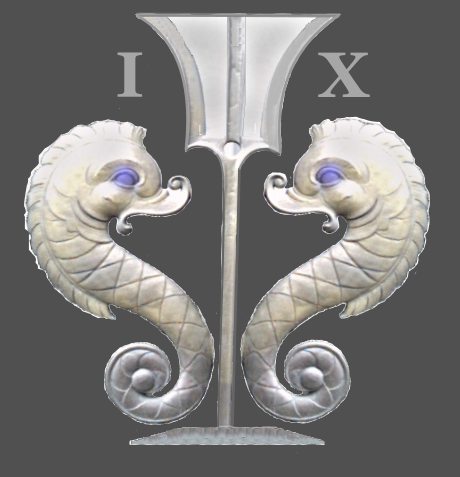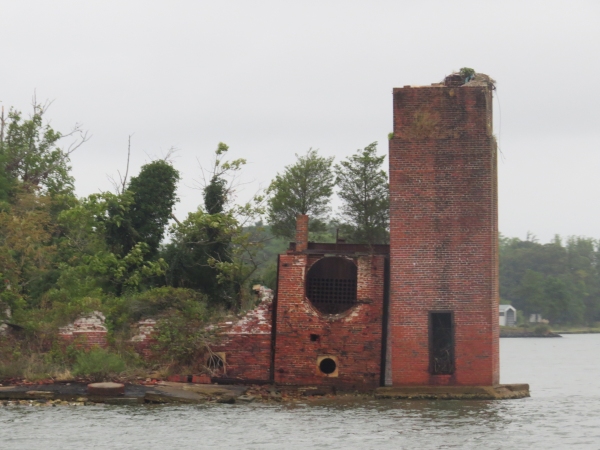 We have mixed emotions about zoos. We've been to some spectacular ones like the Denver Zoo, for instance, and we've visited some smaller zoos in the Amazonia that were revolting. In all cases, the animals are spectacles, on view for all to see, and in enclosures. The type and size of the enclosures and the care given to the animals is paramount in how we rate the zoo. We passed up the zoo in Cayenne, but we were close to the Paramaribo Zoo and had the time. It's a small zoo, hidden away in a wooded area north of the city, accessible by a narrow, bumpy road with limited signage. Not many people visit though the admission is fairly cheap (SRD10/pp). It's an uninspiring place.
We have mixed emotions about zoos. We've been to some spectacular ones like the Denver Zoo, for instance, and we've visited some smaller zoos in the Amazonia that were revolting. In all cases, the animals are spectacles, on view for all to see, and in enclosures. The type and size of the enclosures and the care given to the animals is paramount in how we rate the zoo. We passed up the zoo in Cayenne, but we were close to the Paramaribo Zoo and had the time. It's a small zoo, hidden away in a wooded area north of the city, accessible by a narrow, bumpy road with limited signage. Not many people visit though the admission is fairly cheap (SRD10/pp). It's an uninspiring place.

It was a hot day and the animals were naturally lethargic … as were we. We were interested in the zoo because it specialized in South American species. No polar bears or kangaroos or buffalos, but instead tapirs and anacondas and colorful, exotic birds. For instance, we'd never seen a Harpie eagle in the flesh, but of course, his small enclosure made us sad for him instead of excited about seeing one for the first time.

The anteater was out and about, snuffling for ants. The single anaconda was all coiled up in the grass trying to stay cool in his cage and the spectacled caiman was eyes-only above the murky, trash-filled waterhole in which he lived.

A lone tapir roamed his enclosure, as did a couple peccaries and coatis. Two river otters seemed to be enjoying their small pool of water, but they were hard to see. A few monkeys were playing in the trees behind the cages and they were much more fascinating than the caged animals.

Many of the signs had both Dutch and English descriptions. Some of the signs were missing. In other cases, there were signs, but the cages were empty. Most of the cages were surrounded in a fine mesh with a single bar in front to keep people away. Bad for photos and totally useless to keep people out. Unsupervised kids ran in front of the bars, threw rocks and trash at the animals and banged on cages. No one on the supervisory staff seemed to be aware or care. When I scolded one little boy for throwing rocks at the jaguar, he gave me a dirty look, threw another rock and moved on. No parents in sight. The jaguar looked unconcerned.
The birds were gorgeous, but there were several of them crowded in each cage. Photographing them behind bars is not very satisfying. The zoo was depressing, and we left.

We'd heard about the Neotropical Butterfly Park and decided it was probably worth a visit. For some reason, we never feel quite as sorry for butterflies bred in captivity for display. We made our way south out of the Parbo to Lelydorp. The parking lot for the butterfly park was nearly empty and we weren't sure whether it was even open. It was. The admission price was steep (SRD35/pp) for Suriname. I doubt many locals get to visit.

There were a couple of buildings to explore on our own before heading on a guided tour. The Insect Museum came first. Primarily concentrating on butterflies and moths, it gave the arachnids and roaches and beetles and other 6-legged critters their fair share of display place. I noted that all specimens were actually from Suriname which made my skin crawl.

Here's some butterfly trivia for you … “Worldwide there are an estimated 20,000 species of butterflies with roughly ten times more moths.” In Suriname, 1,460 butterfly species have been identified.
A small gallery next door had mediocre quality bird and animal paintings on display. Upstairs in the same building was the panorama with associated audio, touted as “”a hand painted 360⁰ panoramic view of typical Surinamese landscapes”. We were unimpressed, but then maybe we're getting jaded in our old age.
The “vlindertuin” was my favorite part … the butterfly garden. We were able to photograph several beauties before the guide corralled us for a tour.



We didn't realize that the park also bred boa constrictors and turtles for export. We passed by cage after cage of constrictors and then a large area of caged white rats (boa cafeteria) before heading to the turtle hatchery. Honestly, we were less interested in the snakes and turtles and more interested in the butterflies, but we plodded along.


In another small building, we watched slow-working, bored ladies chatting behind glass while picking and packaging butterfly pupas for export to butterfly parks around the world. With so few visitors, you'd think they'd at least make an effort to look interested in their work when guests walked by, but instead they chose to ignore us.

We were led into another room full of lovely blue morphos that had hatched a week or so before. The males are large and black with a contrasting metallic blue on their wings. Absolutely lovely. The females … drab brown and yellow.

New hatchlings gathered together in clusters, a form of protection … safety in numbers.

We followed the guide on a wooded path where she pointed out trees and shrubs, but unfortunately the names were all in Dutch and she didn't know them in English. She led us back to the entrance building, thinking we were ready to leave. Au contraire...we wanted our money's worth and headed back to wander through the butterfly garden again.


All in all, a less than satisfactory day in the animal/insect department. Still, had we not gone to the zoo and butterfly park, we'd have probably regretted it. As Mark Twain so aptly put it … “Twenty years from now, you will be more disappointed by the things you didn’t do than by the ones you did do.” With that in mind, we're glad we went.
Want to see more butterflies? Check out our butterfly page on the Nine of Cups website.
Back to the boat for a couple of chore days, but more exploring to come. Stay tuned.
Today's Dutch words – dagvlinder en nachtvlinder – day butterfly and night butterfly (moth)
























